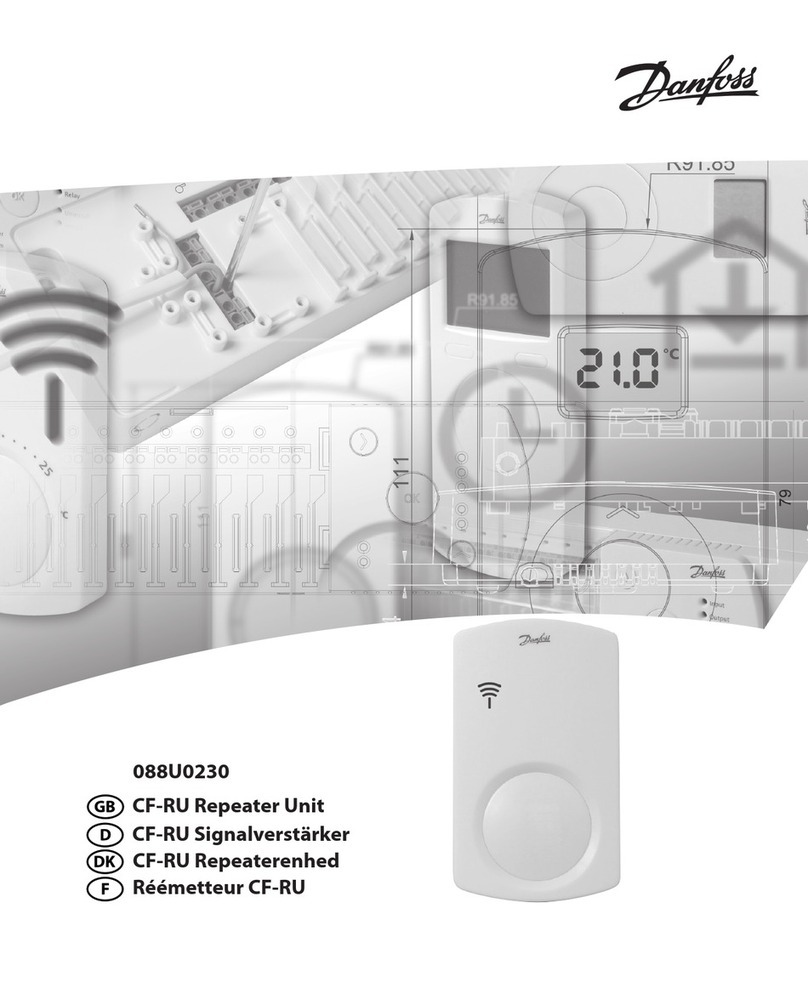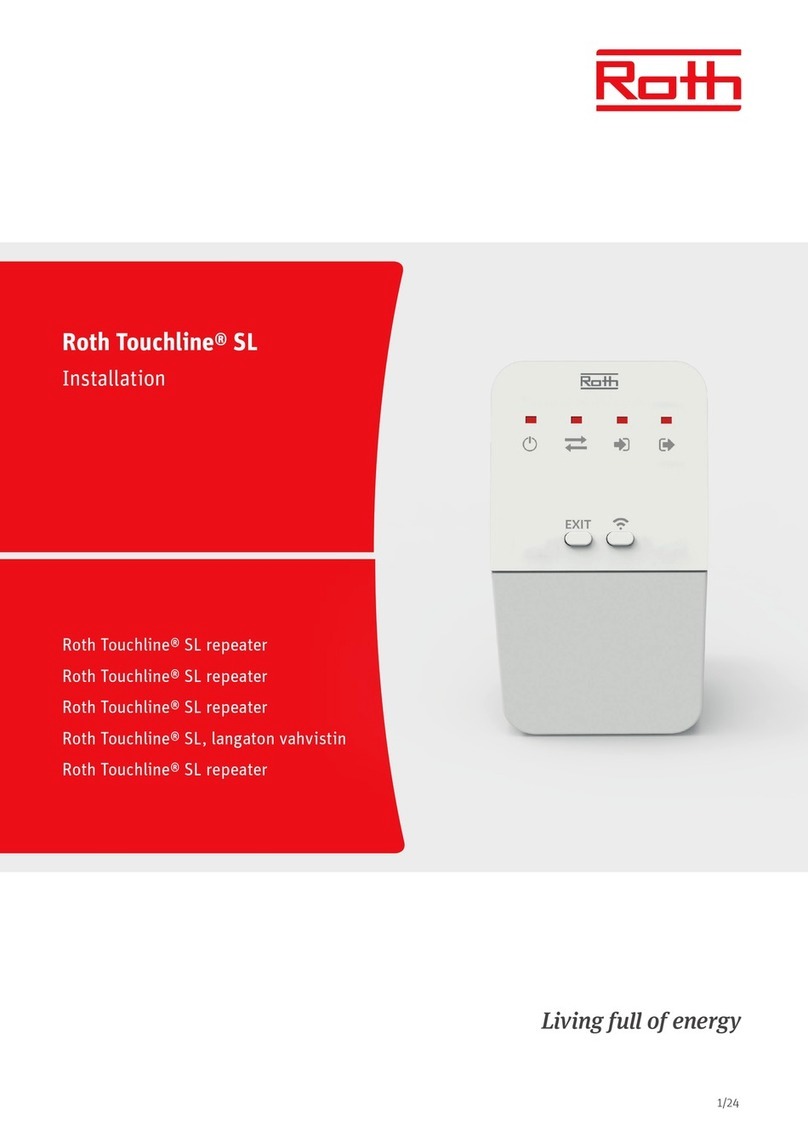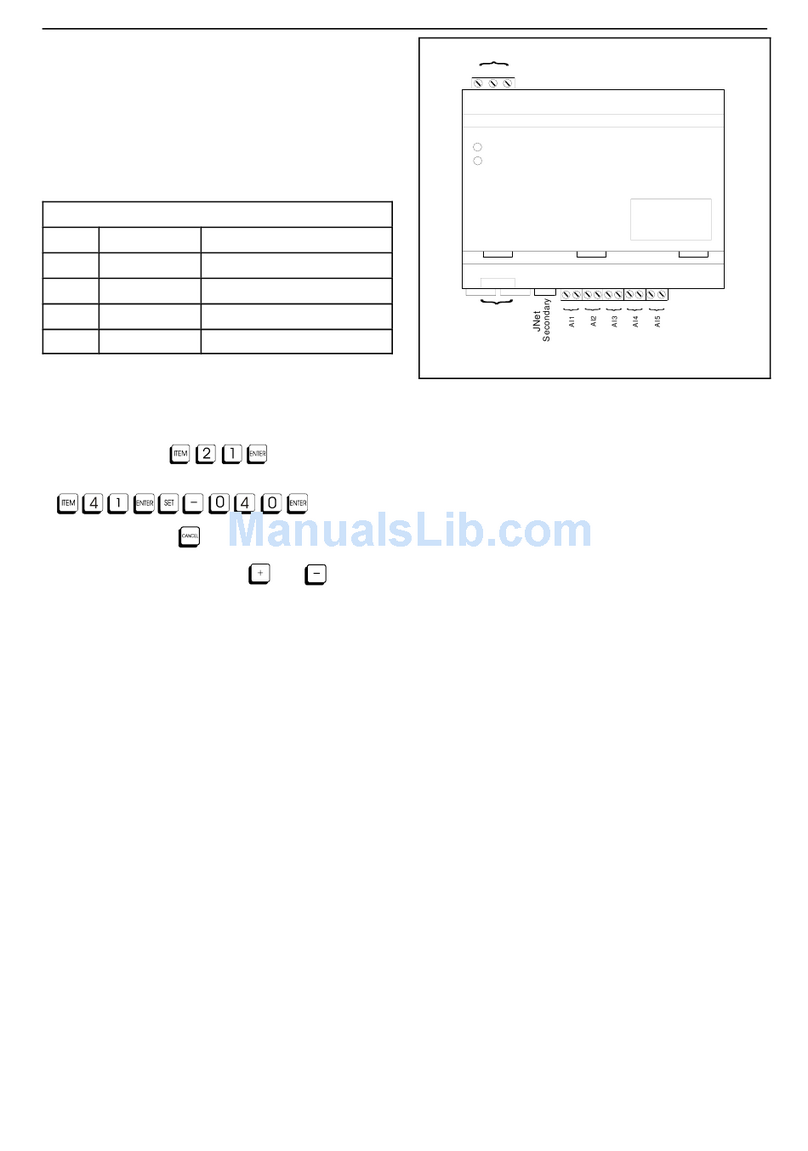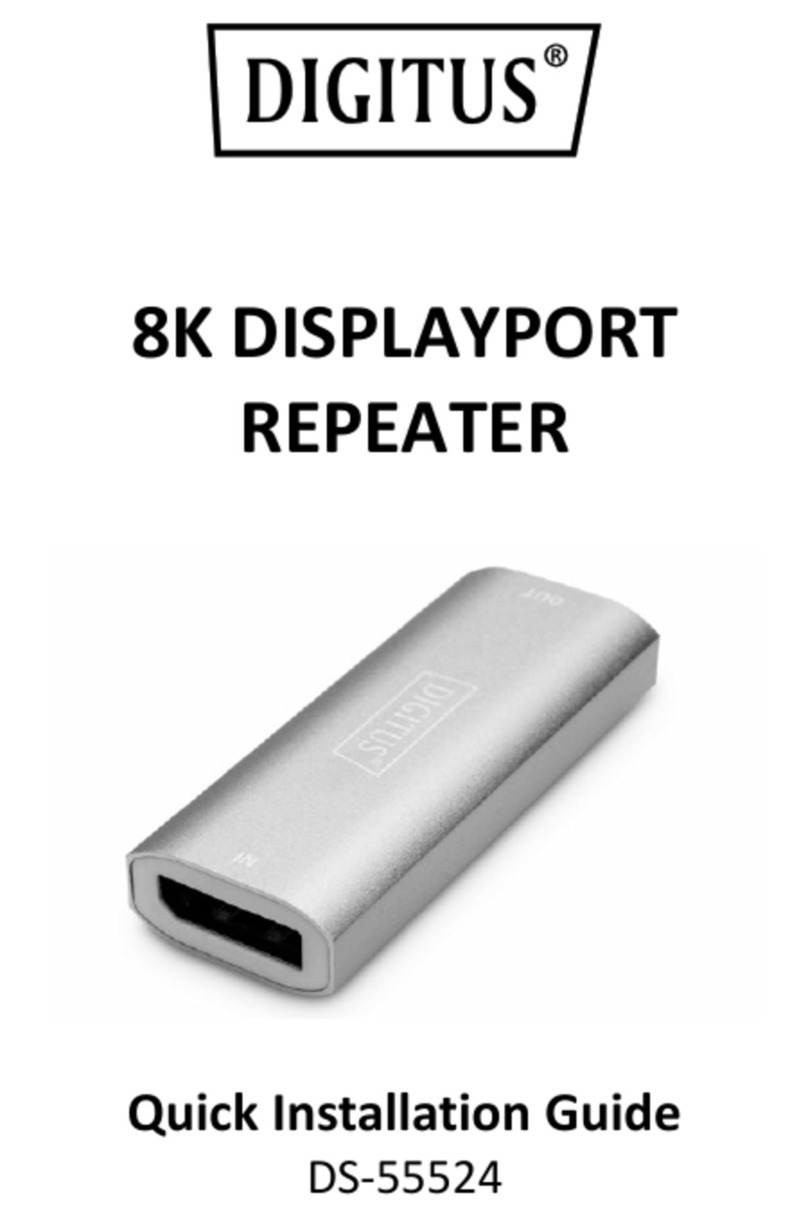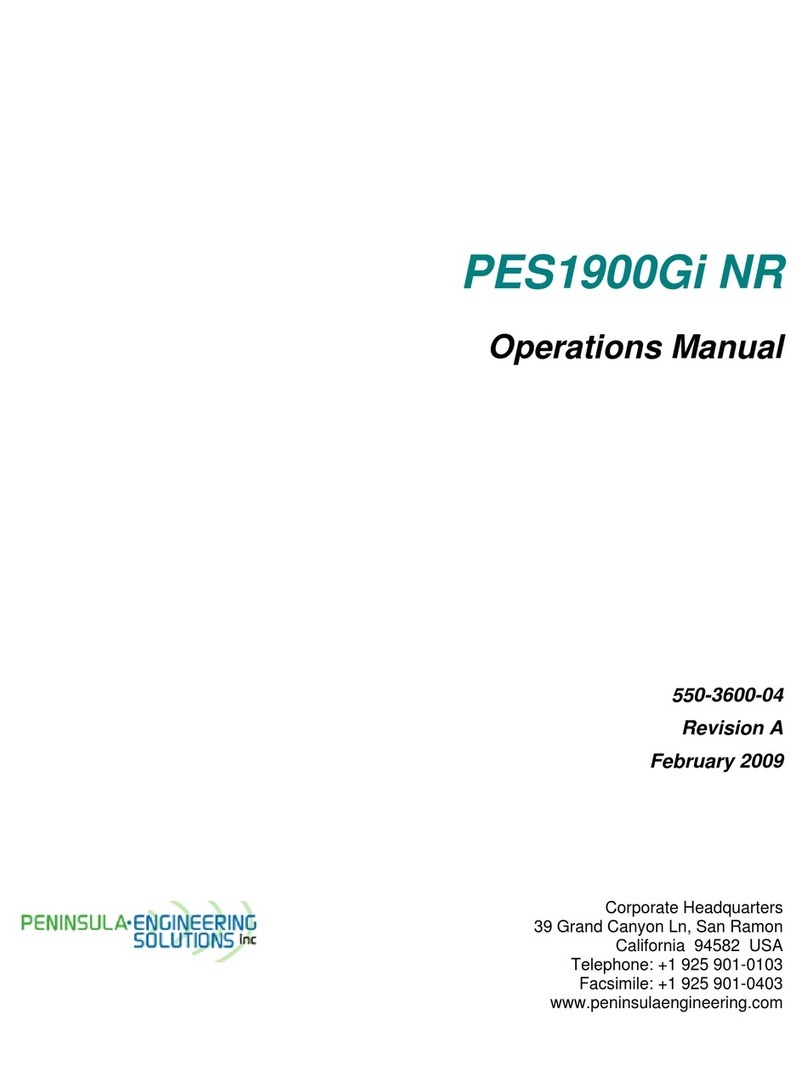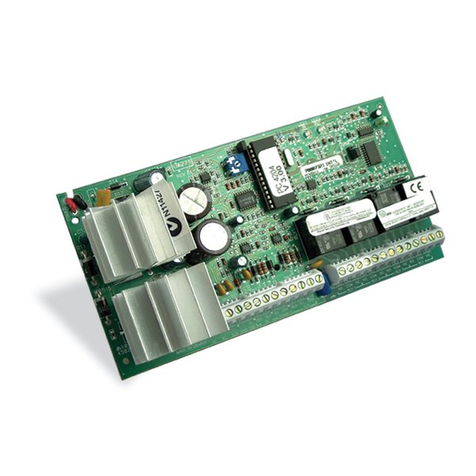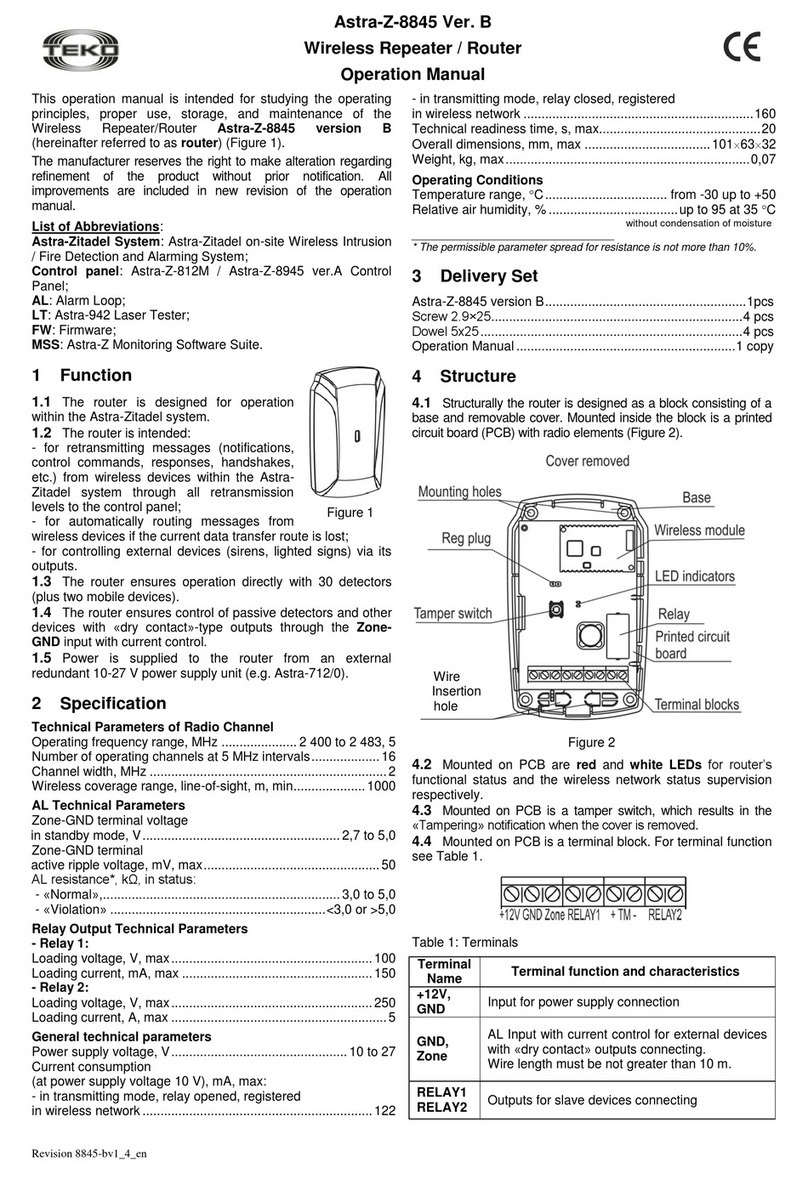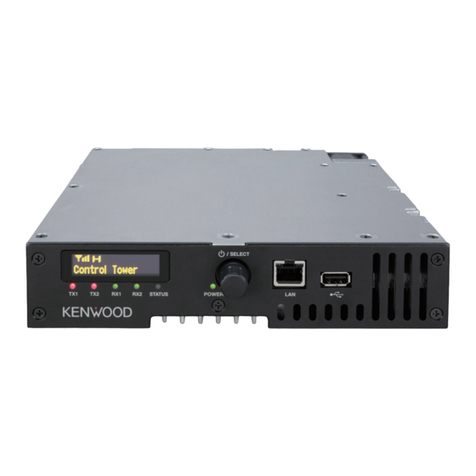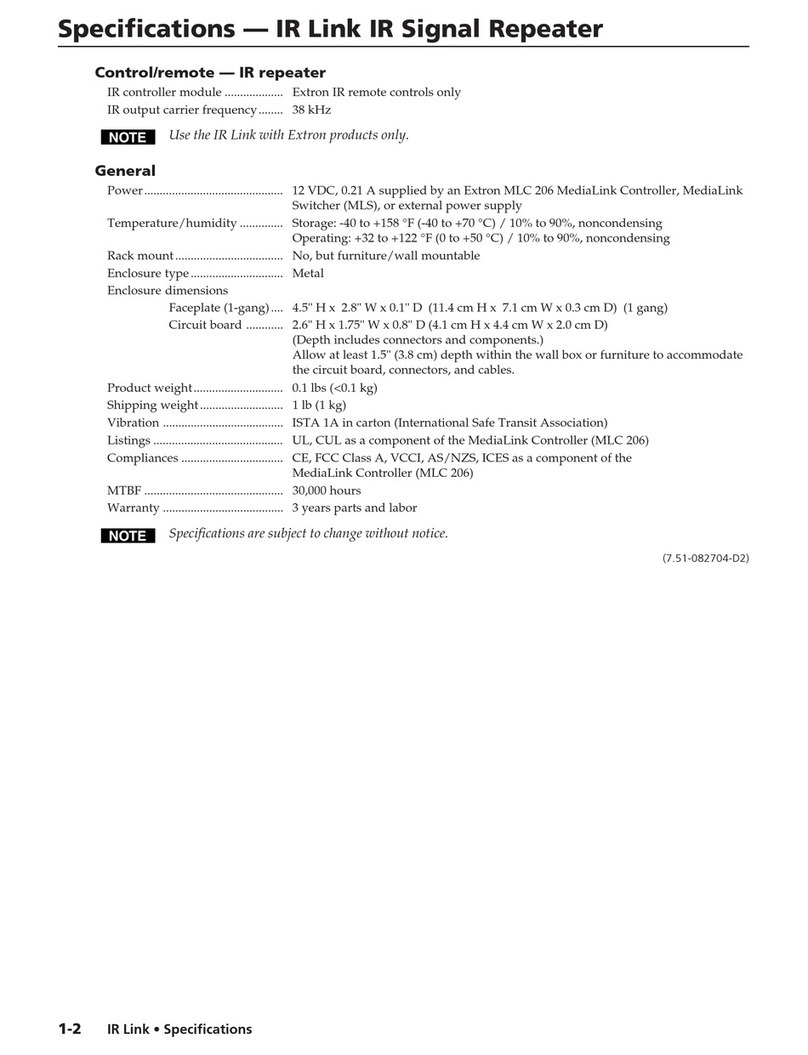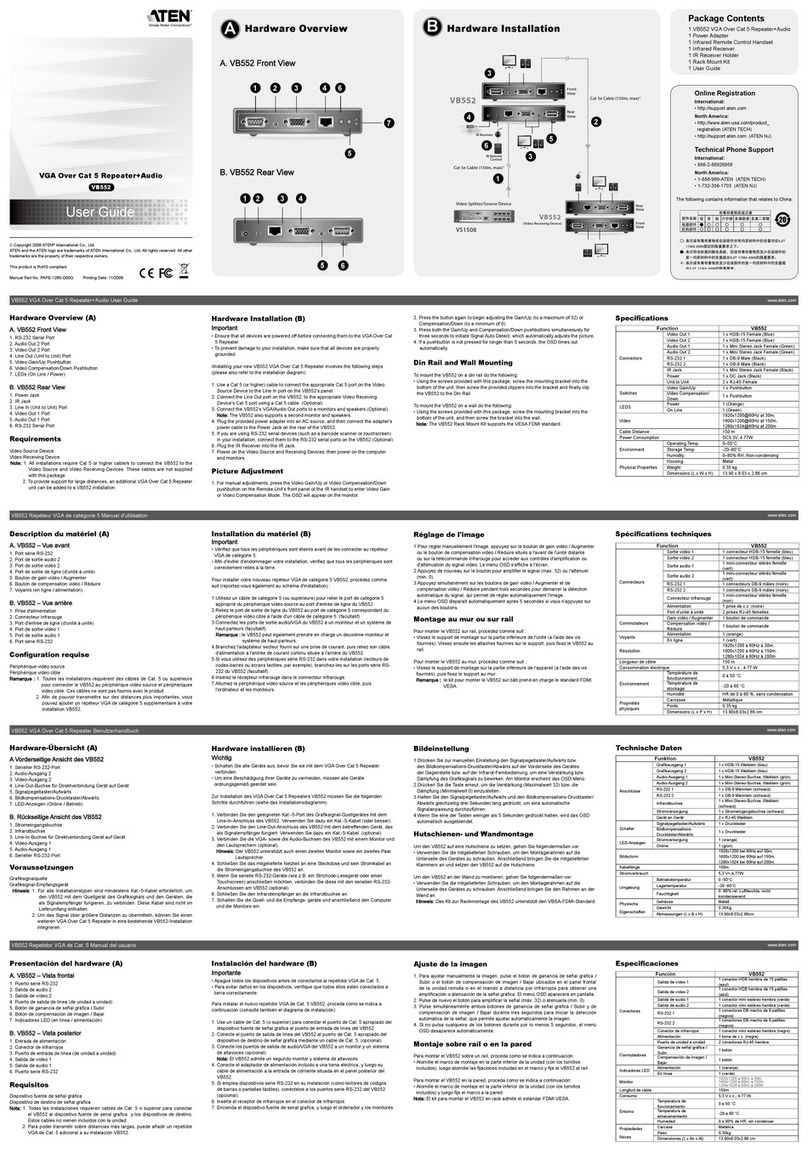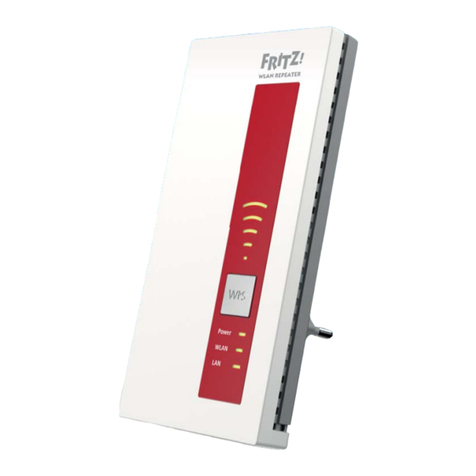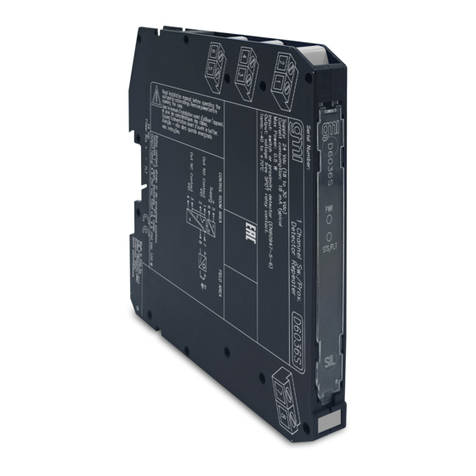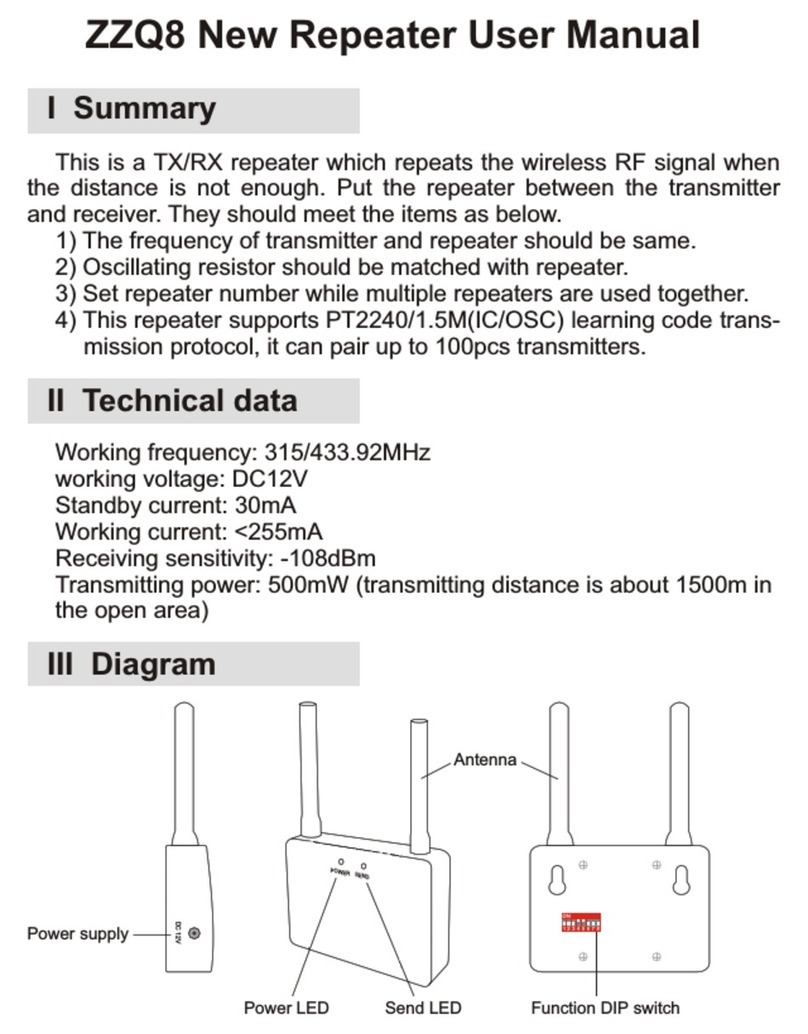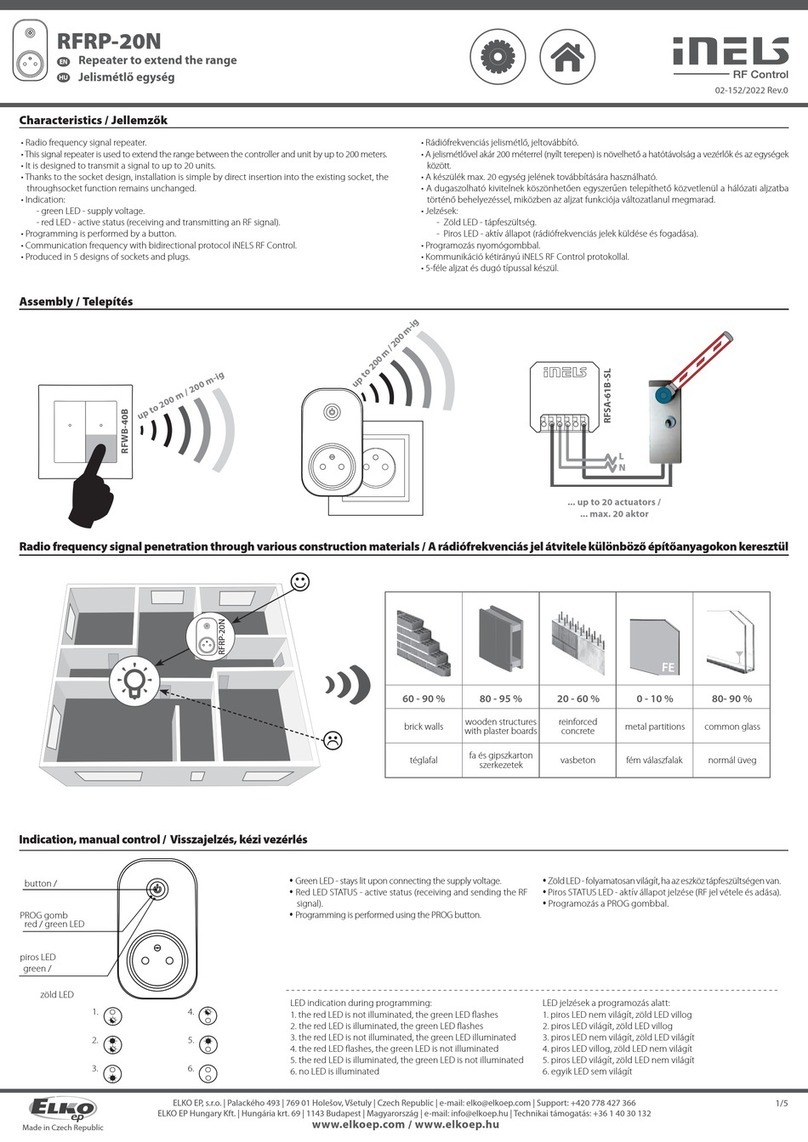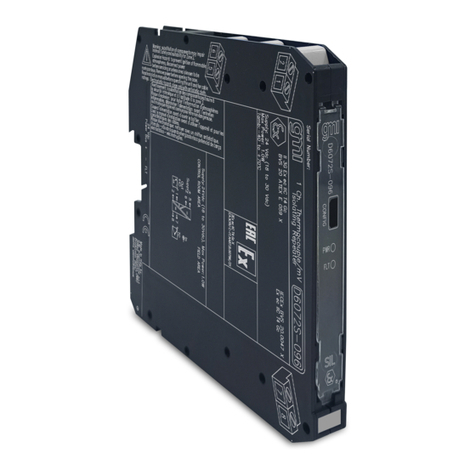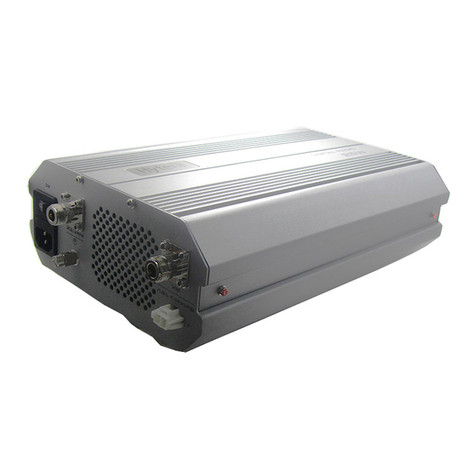SmartLok SL-RP-1 User manual

SmartLok Repeater
User’s Manual
Model # SL-RP-1

SmartLok Repeater(SL-RP-1)
The SmartLok Repeater is an
externally powered device that
contains a 2.4GHz 802.15.4
compliant radio that acts as the
Zigbeerouter in the SmartLok
network. In short, it relays
wireless messages from locks
or other repeaters towards the
Gateway.
The SmartLok Repeater
communicates over the air with
the SmartLokwireless network.
The Repeaterroutes data
packets and lets other devices
join the network. It contains
a form C relay in which an
external alarm can be plugged
in to sound off during alarm
conditions.
Specications
• 12V Power Supply
•Operational Temperature:
-20°C to 35°C
•Frequency: 2405-2480MHz

SmartLokRepeater Installation
1. Power
To power the Repeater on,
simply plug the provided
external power supply into an
AC outlet, and plug the barrel
connector into the Repeater’s
power port. To power the
Repeater off, simply remove
the barrel connector.
2. Alarm Relay
A form C relay capable of
24VDC and 2A is provided to
drive an external alarm (light,
siren, etc.). A removable
terminal block plug is
provided for easy installation.
Simply strip the ends of the
wires, insert them into either
the Normally Open (NO) or
Normally Closed (NC) and
Common ports, and tighten
the screws. When done,
insert the terminal block into
the mating connector on the
Repeater.
3. Remote Antenna
In most installations, the
local antenna is the only
antenna required. A 50-ohm
termination is installed by
the factory on the remote
antenna port.
In installations where
the network needs to
communicate across an RF
barrier, such as a metal or
concrete wall, the remote
antenna port can be utilized.
Acquire a remote antenna
accessory kit from the
manufacturer and use the
instructions provided with
the kit to install it.
21
3

SmartLok Repeater Mounting
There are two recommended methods to mount the Repeater:
Table Top
One approved method to mount the Repeater is
to simply place it on a table top. Its rubberized
tracks will keep it from sliding around on most
surfaces. Adjust the local antenna with a 90
degree bend so that it points vertically.
Wall Mount
Another method to mount the Repeater is to
place it on a wall. Use the template that is
provided with the Repeater for drill hole locations.
There are four key hole slots in the base of the
unit that allow it to slide over the four screw
heads. Once the Repeater is in its nal position,
adjust the local antenna so that it is straight and
pointing vertically.

SmartLok Repeater Operation
1. Login to the SmartLok Management Console
2. Navigate to the “Gateways” page.
3. To add a SmartLok Repeater, there must rst be a SmartLok Gateway connected to the network.
4. In the table, click the white boxes and enter the SmartLok Repeater’s Name, Address, and select
the SmartLok Gateway it will connect to in the Upstream Gateway eld. Click the plus sign.
5. To remove a Repeater, click the X symbol to the right of the Repeater you want to remove. The
system will ask you for a conrmation.
6. To change a Repeater’s details, click one of the elds that has the pencil icon next to it. The eld
is now editable. To accept the changes, hit Enter or click the check icon next to the eld. To cancel
the changes, hit Escape or click the X icon next to the eld.

SmartLok Repeater
SL-RP-1
User’s Manual
FCC Statement:
This device complies with part 15 of the FCC Rules. Operation is subject to the following two conditions: (1) This
device may not cause harmful interference, and (2) this device must accept any interference received, including
interference that may cause undesired operation.
This equipment has been tested and found to comply with the limits for a Class B digital device, pursuant to part 15 of
the FCC Rules. These limits are designed to provide reasonable protection against harmful interference in a residential
installation. This equipment generates, uses and can radiate radio frequency energy and, if not installed
and used in accordance with the instructions, may cause harmful interference to radio communications. However,
there is no guarantee that interference will not occur in a particular installation. If this equipment does cause harmful
interference to radio or television reception, which can be determined by turning the equipment off and on, the
user is encouraged to try to correct the interference by one or more of the following
measures:
—Reorient or relocate the receiving antenna.
—Increase the separation between the equipment and receiver.
—Connect the equipment into an outlet on a circuit different from that to which the receiver is connected.
—Consult the dealer or an experienced radio/TV technician for help.
Caution: Any changes or modifications not expressly approved by the party responsible
for compliance could void the user's authority to operate the equipment.
This equipment complies with FCC radiation exposure limits set forth for an uncontrolled environment.
This equipment should be installed and operated with minimum distance 20cm between the radiator& your body.
This transmitter must not be co-located or operating in conjunction with any other antenna or transmitter.
IC statement:
This device complies with Industry Canada licence-exempt RSS standard(s). Operation is subject to the
following two conditions: (1) this device may not cause interference, and (2) this device must accept any
interference, including interference that may cause undesired operation of the device.
Le présent appareil est conforme aux CNR d’Industrie Canada applicables aux
appareils radio exempts de licence. L’exploitation est autorisée aux deux conditions suivantes :
(1) l’appareil ne doit pas produire de brouillage, et
(2) l’utilisateur de l’appareil doit accepter tout brouillage radioélectrique subi,
même si le brouillage est susceptible d’en compromettre le fonctionnement.
IC Radiation Exposure Statement:
This equipment complies with Canada radiation exposure limits set forth for uncontrolled environments.
This transmitter must not be co-located or operating in conjunction with any other antenna or transmitter.
Déclaration d’IC sur l’exposition aux radiations:
Cet équipement est conforme aux limites d’exposition aux radiations définies par le Canada pour des environnements
non contrôlés. Cet émetteur ne doit pas être installé au même endroit ni utilisé avec une autre antenne ou un autre
émetteur.
